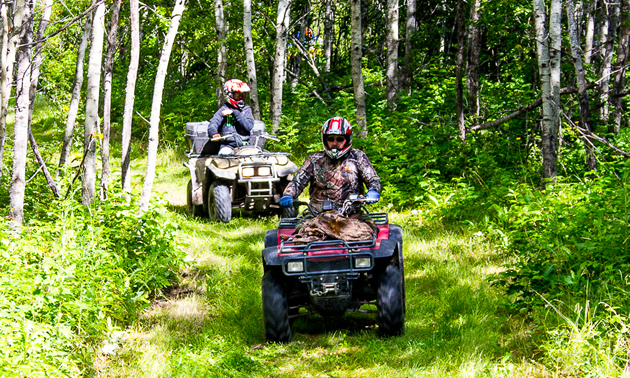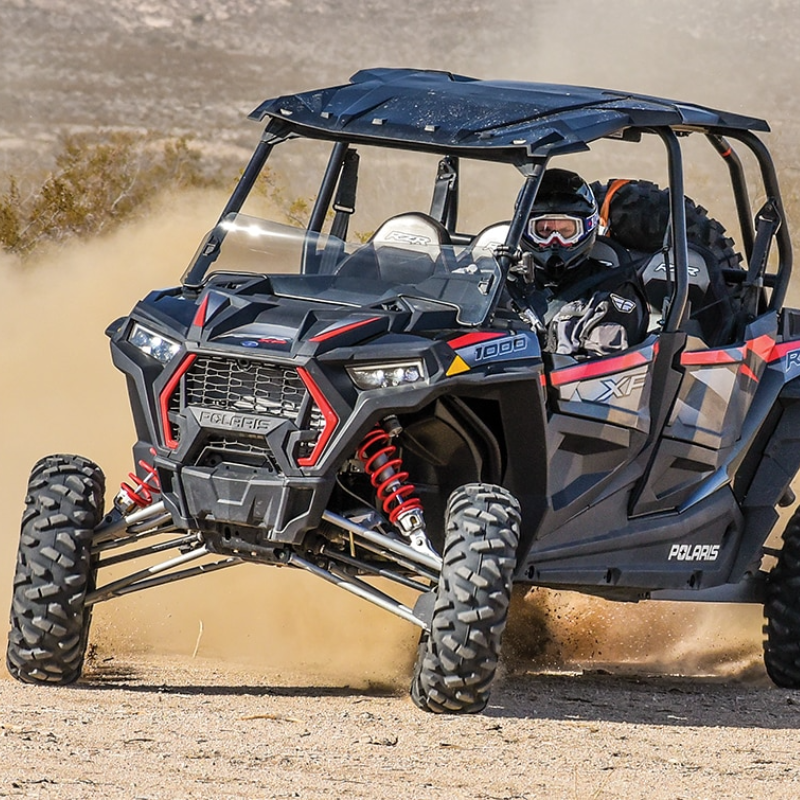With the warm summer weather and so many people off-roading for transportation, recreation or work purposes, John Meed—who is the general manager of the Saskatchewan All-Terrain Vehicle Association (SATVA)—would like them to answer the following question:
“You may know a lot about ATVs, but do you know your limits?”
“It’s important to understand your limitations so you can have a safe and enjoyable experience while ATVing,” said Meed. “We’ve found there are some ATVers who simply don’t understand their limitations, whether they are seasoned veterans or newcomers. By engaging in dangerous manoeuvres or failing to abide by the regulations of their particular ATV, these people put themselves and others in potential dangerous situations.”
That being said, here are five ways to be a safer ATVer:
1. Match your kids with the right ATV
Meed said that children have the highest amount of limitations when it comes to riding ATVs, and it's recommended that they ride age-appropriate vehicles:
- Vehicles with an engine size no greater than 70 cc for children under 12 years
- Vehicles with an engine size no greater than 90 cc for children under 16 years
“Children do not possess the physical development to safely drive large ATVs or the cognitive ability to react to potentially dangerous situations – regardless of their size or maturity,” said Meed.
He is quick to note that children are hardly the only ones who have limitations when it comes to ATVing. Many of the limitations, he said, can be dealt with through simple preparation.
2. Get the training
The first step is to put in the classroom time and take a driver safety course, which will help refresh skills as well as teach new skills for new or experienced riders.
An equally important step is to wear protective gear, especially a helmet. A brain injury can result in lifelong disabilities and affect physical functions, such as speech, fine and gross motor control, as well as alter an individual’s personality, memory and emotions.
Other important gear includes gloves, ankle boots, long pants and a long-sleeved shirt.
Finally, designate an emergency contact and carry a cell phone or walkie talkie with you so you can call for help in the event of an emergency.
3. Don’t drink and ride
Meed can’t emphasise the negative effects of drinking and riding enough.
“Drinking and then riding places a huge limitation on the ATVer,” he said. “Drinking reduces a rider’s reaction time and impairs their judgement—not to mention the fact operating an ATV on public or private property while impaired is illegal.”
4. Throttle down
Once on their ATV, Meed said people must continue to make safety a priority.
When it comes to location, he noted that ATVers should avoid roads and streets when driving, except to cross the road or go around obstacles. The terrain on and around roads can cause the vehicle to roll over due to instability in the ground.
Also, people should not speed while driving, as ATVs are designed to go a certain speed safely. Increasing the speed—especially through certain terrains—decreases one’s ability to control the vehicle and keep it stable.
Attempting trick manoeuvres has a similar effect. Riders must avoid any tricks or stunts beyond their capabilities that will cause an accident.
5. Use your head
In the end, Meed says it all comes down to common sense.
“By simply using your head, you can avoid a potentially dangerous situation,” he said. “Before ATVing, take time to honestly reflect and determine whether or not you have taken every precaution necessary. While ATVing, ensure you are driving in a safe manner. If you know your limits, there’s no limit to the fun you can have while ATVing.”
For more info
SATVA was formed in 2006 to unite ATV clubs and users into a single voice to promote the safe and responsible use of ATVs in Saskatchewan.
For more information, contact John Meed at 1-855-297-2882 (office), 306-541-8427 (cell) or by email.








Comments